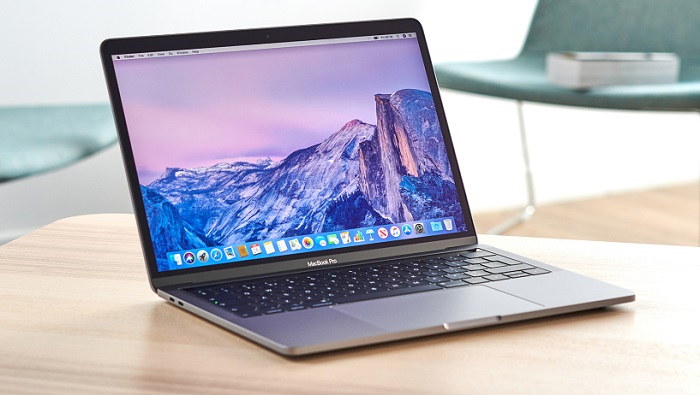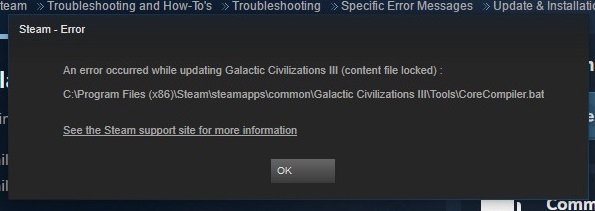USB (Universal Serial Bus) ports are an essential component of modern computers, allowing for the connection of various devices such as keyboards, mice, external hard drives, and smartphones.
However, encountering issues with USB ports can be frustrating, particularly when you experience the “USB Ports Not Working” error. This error can disrupt your workflow and affect your ability to use peripheral devices effectively.
In this comprehensive guide, we will explain the meaning of the “USB Ports Not Working” error, its significance, what causes it, and effective solutions to help you resolve this issue and regain the functionality of your USB ports.

Contents
Understanding the USB Ports Not Working Error
Before we delve into the details, let’s break down the error message itself:
- “USB Ports” refers to the physical connectors on your computer that allow you to connect external devices via USB cables.
- “Not Working” indicates that the USB ports are unresponsive or malfunctioning, preventing the proper functioning of connected devices.
In simple terms, the “USB Ports Not Working” error occurs when one or more USB ports on your computer cease to function correctly, making it impossible to use connected peripherals or transfer data via USB.
Read Also:
Common Symptoms of the Error
When you encounter the “USB Ports Not Working” error, you may experience the following symptoms:
- Error Message: The primary symptom is the lack of response from the USB ports when you connect devices, often accompanied by an error message in the device manager or notification area.
- Inoperative USB Devices: Connected USB devices such as flash drives, keyboards, or mice may not work when plugged into the affected USB ports.
- No Device Recognition: Your computer may fail to recognize any devices connected to the malfunctioning USB ports.
- Intermittent Connectivity: USB devices may intermittently connect and disconnect from the USB ports, making them unreliable for use.
Now that we understand the symptoms, let’s explore the potential causes of the “USB Ports Not Working” error.
Possible Causes of the Error
To effectively troubleshoot and resolve this error, it’s crucial to identify its underlying causes. Here are some common reasons behind the “USB Ports Not Working” error:
- Driver Issues: Outdated, corrupted, or missing USB drivers can lead to problems with USB port functionality.
- Physical Damage: Physical damage to the USB ports or connected devices, such as bent or broken pins, can cause connectivity issues.
- Power Supply Problems: Insufficient power supply to USB ports, particularly in laptops or low-power USB hubs, can result in devices not working correctly.
- USB Selective Suspend Feature: Windows has a feature called “USB Selective Suspend” that can turn off USB devices to save power, but it may lead to connectivity problems.
- Malware or Virus Infections: Malicious software can interfere with USB port functionality.
- System Errors: System file corruption or errors within the Windows operating system can affect USB port operation.
- BIOS/UEFI Settings: Incorrect BIOS or UEFI settings may disable USB ports or limit their functionality.
Now that we’ve identified the potential causes, let’s explore the solutions to fix the “USB Ports Not Working” error:
How to Fix USB Ports Not Working
Now let’s have a look at how you can fix the issue of USB Ports not working on the laptop.
Method 1 – Restart Your PC
Most of the time, a simple step of restarting your device can fix some minor and major issues. You just have to remove your USB device from the laptop and after some minutes, restart your laptop.
Now put your USB again in the USB slot of your laptop and check if your issue has solved. If the problem is solved then congratulations but if not then move on to the next solution.
Method 2 – Make Sure USB Ports Are Not Damaged
Examine the USB port of your laptop in order to find out if there is something stuck in the port. If you find out something then remove it with care.
In case you find out that port is looking alright then there must be not any problems inside it. Now put your USB inside the port and move it slightly up and down. If it is moving freely then your post must have a problem.
Method 3 – Check Device Problems
If you have a second laptop available to you at the time then put your USB in it’s USB port. If it is working on the second laptop, it means your USB has an issue.
But if it is not working even in that port, then there must be an issue in your USB device. In case, you don’t have any other laptop but you have another USB then you can try putting it.
Method 4 – Adjust Power Management
Your laptop has a feature to turn off your USB controllers when you are not using them in order to save power. It again turns ON when you need to work on it. But sometimes due to some errors, the Windows becomes unable to turn your USB controller ON.
Follow the steps mentioned below in order to set the Power Management:
Step 1 – First of all you have to invoke your Run Box and to do so you have to look for the Windows key and R key present on your keyboard and press them together. Now a box will appear in which you have to put the command devmgmt.msc and click on OK.
Step 2 – Now a drop-down list will appear on your screen. In order to expand it you have to click on the Device Manager window and then scroll down and double click on the option Universal Serial Bus Controllers.
Step 3 – A list will be appeared from which you have to click on the option USB Root Hub and then click on Properties.
Step 4 – Now you have to select the tab Power Management. Then you have to untick the option Allow the computer to turn off this device to save power and then select the OK option.
Step 5 – Now you have to perform the same steps for 3-4 times for all the USB devices present in your USB Serial Bus Controllers.
After performing the steps you have to take a look that your USB ports are now working properly or not. If the problem is solved then congratulations but if not then move on to the next solution.
Method 5 – Reinstall USB Drivers
In order to fix the issue USB port not working, you can uninstall all the USB devices present in your laptop with the help of Device Manager. And then your Window will install them again after rebooting the device.
To do so you have to follow the below-mentioned steps:
Step 1 – First of all, you have to invoke your Run Box, and to do so you have to look for the Windows key and R key present on your keyboard and press them together. Now a box will appear in which you have to put the command devmgmt.msc and click on OK.
Step 2 – Now a drop-down list will appear on your screen. In order to expand it you have to click on the Device Manager window and then scroll down and double click on the option Universal Serial Bus Controllers.
Step 3 – A list will be appeared from which you have to click on the option USB Root Hub and then click on the Uninstall device.
Step 4 – Now you have to perform the same steps for 3-4 times for all the USB devices present in your USB Serial Bus Controllers.
Step 5 – Finally, reboot your laptop and have a look at whether your issue has fixed or not.
Method 6 – Disable USB Selective Suspend
In case, you are still facing the USB Ports Not Working issue. You can now Disable USB Selective Suspend. It helps in preventing your device from the useless use of powers when not in need.
It does this all by changing some USB ports in the state of low – power. You can try to disable this feature in order to get rid of the issue.
Step 1 – Open the Search bar by following the above methods and then in that box, type choose a power plan. Then select the option Choose a power plan.
Step 2 – Now select the option Change plan settings which are present just after the plan option where you currently are.
Step 3 – Now select the option change advanced power settings.
Step 4 – Now you have to double click on both one after the other USB settings and USB selective suspects.
Note: In case you are performing all this on your laptop, you have to click on the battery and then disable it by using the menu Dropbox.
Step 5 – Now a drop-down list will appear on your screen. In order to expand it, you have to click on the Enabled option. Now Save all the changes that you made by clicking on Apply and OK.
Have a look if your problem is solved successfully.
Method 7 – Remove Your Laptop Battery
If the USB Ports not working problem is still stuck with your USB ports then you can try fixing this issue by removing the battery of your laptop. This solution has resulted in very effectively as reported by a lot of users.
To do so you just have to remove the battery of your laptop and press the power button for about 30-40 seconds. This process will help in discharging your capacitors.
A lot of users found it more effective to leave you switched off the laptop after removing the battery for a full night. It will surely help you to solve the USB Ports Not Working issue.
Read More:
- Outlook Not Responding
- Skyrim Failed to Initialize Renderer
- Taskbar Showing in Full Screen
- api-ms-win-crt-runtime-l1-1-0.dll is Missing



